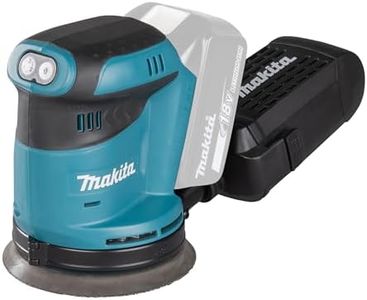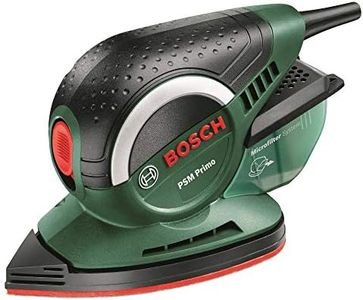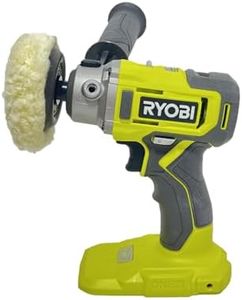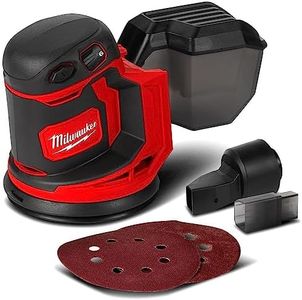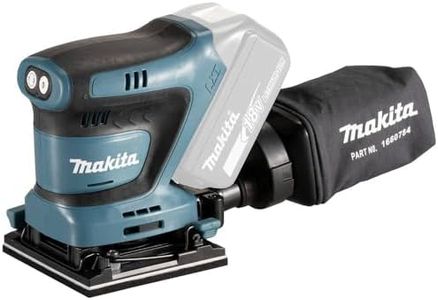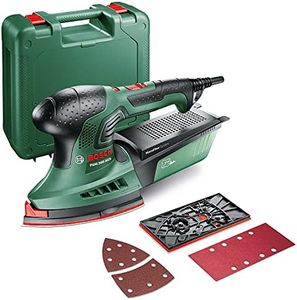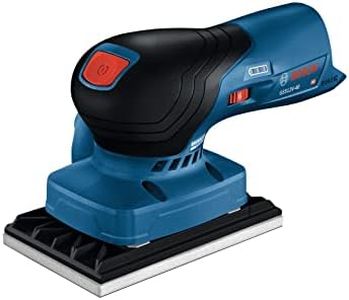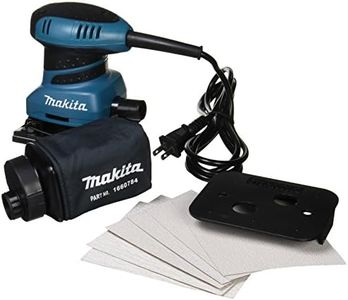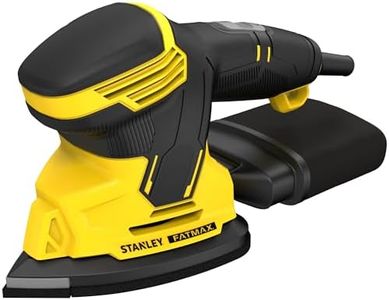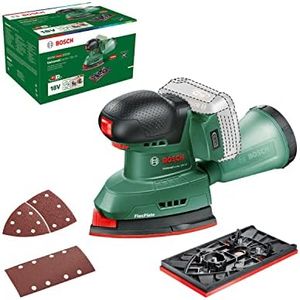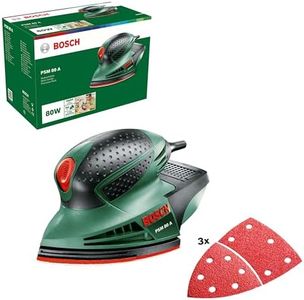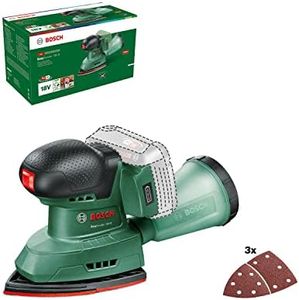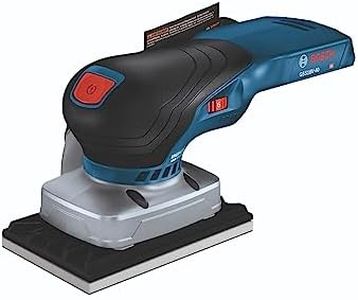We Use CookiesWe use cookies to enhance the security, performance,
functionality and for analytical and promotional activities. By continuing to browse this site you
are agreeing to our privacy policy
10 Best Detail Sanders
From leading brands and best sellers available on the web.Buying Guide for the Best Detail Sanders
When choosing a detail sander, it's important to focus on how the tool will fit your specific projects and comfort level. A good detail sander makes it easy to smooth tight spaces or intricate areas that larger sanders can't reach. Think about the materials you’ll work with, how often you'll use the sander, and whether you'll need it for delicate or heavy-duty jobs. The right selection makes your sanding tasks easier, faster, and gives you a better finish.Power SourceThe power source describes how the sander is powered, usually either by corded electricity or by battery (cordless). Corded models offer consistent power and are great for long or demanding jobs, but they require access to a power outlet. Cordless models offer portability and freedom of movement, making them ideal for smaller projects or for working in places without easy access to plugs. If you work mostly in one spot and tend to do big projects, corded is a strong choice. For more flexibility and light tasks, cordless may suit you best.
Pad Shape and SizeDetail sanders often have a triangular or teardrop-shaped sanding pad for getting into corners and tight spots. The pad size affects where you can use the sander—a smaller pad is great for fine, detailed work, while a larger pad can cover more surface quickly. If you frequently work on furniture, window frames, or intricate woodwork, a smaller pad is beneficial. If you have bigger projects or flat surfaces, look for a larger pad but still with a shape that lets you reach edges easily.
Sanding Speed (OPM - Orbits Per Minute)OPM or orbits per minute measures how quickly the sanding pad moves. Higher speeds mean more material gets sanded in less time, which is good for tougher jobs. Lower speeds are gentler and better for delicate finishing tasks. Some sanders offer variable speed controls, letting you adjust the OPM to fit what you’re working on. If you need versatility for different tasks, variable speed is helpful, but if your projects are similar and straightforward, a fixed speed might suffice.
Dust CollectionDust collection refers to how the sander manages the dust it creates. Many sanders have built-in dust bags or ports for connecting to a vacuum. Good dust collection keeps your workspace cleaner and makes it healthier by reducing airborne particles. If you work indoors or care about a tidy environment, prioritize strong dust management features. For occasional outdoor work, it may be less critical, but it's always a nice bonus.
Weight and ErgonomicsThe weight and ergonomics of a detail sander affect how comfortable it is to use, especially over long periods. Lighter, well-balanced tools reduce hand fatigue and let you control the sander more precisely, making them ideal for detail-heavy jobs or anyone with less hand strength. If you expect to use it for extended periods or need a lot of maneuverability, focus on comfortable handles and a lightweight design.
Accessory Compatibility and Ease of Pad ReplacementHow easily you can change sanding pads and the availability of different grits or attachments is crucial for workflow and finish quality. Velcro or hook-and-loop systems are convenient for quick pad changes. Having access to various grits lets you move from rough to smooth sanding as needed. If you do a variety of projects or like a flexible workflow, look for a sander with easy pad replacement and good accessory options.
